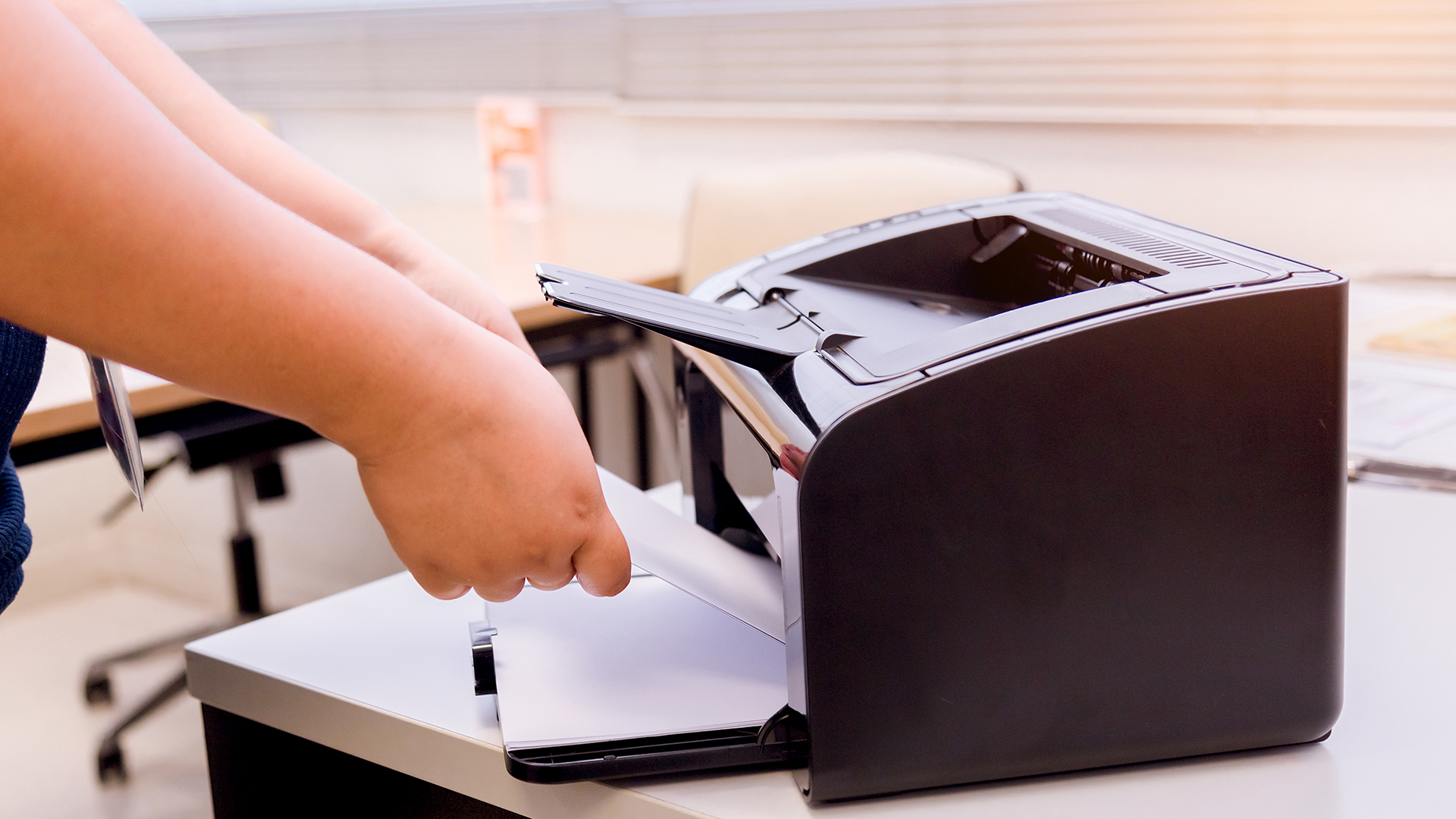Five myths about compact printers: We're here to debunk them
Can a small printer serve all your needs, or will you need to compromise? We bust the myths about compact printers.

You might be wondering if a small printer can truly do it all and stand the test of time, so we're here to debunk some of the most common myths about compact printers. Printers have come a long way over the last couple of decades, going from behemoths that take up a fair chunk of space all the way down to the best compact printers that you can keep in a corner of your desk.
That’s led to some scepticism though – can a small printer really replace the old office workhorse? Are the cartridges much more expensive and do they need to be replaced more often? And does it take an age to print a single file?
We’ll answer all those questions and more as we look at why your next printer can be much smaller than your current one.
Before we start
It’s worth remembering that compact printers won’t be for everyone. If you’re printing off reams of documents, looking for insane color accuracy on a photo print, or are looking to copy a novel’s worth of pages in a single hit, then you’ll always be better served with a more office-appropriate printer.
For your home office, though, there’s a lot to like – and some of it may surprise you. For the purposes of this article, it’s worth mentioning we print on an HP DeskJet 2700 series printer.
Myth 1: Compact printers take a long time to print
While it’s true that a compact printer will, in most instances, print a tad slower than a huge printer that’s already marking up one page while one leaves hits the tray, for the majority of your document printing the difference is entirely negligible.
Our printer receives its instructions and gets straight to work, and if you’re printing one or two pages it’ll likely be done by the time you even reach the printer. Some printers can print more than one sheet at a time, too, meaning the latest chapter of your novel can be in your hands in a minute or less.
Sign up to receive the latest news, reviews, buying guides and deals direct to your inbox
Myth 2: Compact printers require constant ink purchases
There was a time in the 2000s where, if you had a printer at home, you’d constantly be panicking about the amount of toner or ink being used. That stigma has persisted somewhat into home printing in 2022, but it needn’t have.
Some printers are better than others, of course, but for the most part, you’ll get a cartridge or two included with your purchase and you’ll be impressed by how long they last compared to those older options. Some can offer over 1,000 pages for a standard cartridge.
Some, like HP, offer a subscription model for those that need to regularly produce hard copies of documents, meaning you’ll save on buying cartridges in the long run.
Myth 3: Compact printers offer lower quality output
When it comes to printing hard copies of your important presentations or fondest memories, quality is everything. There’s nothing worse than spending ink on a project that comes out looking less than ideal.
Thankfully, that’s another thing that’s changed in the last few years. Depending on your format of choice (popular presentation apps like Canva will offer a print-focused PDF version, for example), your printouts can easily match those from a larger, more expensive printer.
Myth 4: Compact printers struggle with image printing
While this does follow on a little from the last entry, if you’re focused on printing pictures then your printer can only do so much – you’ll want some nice photo paper, too. The good news is that compact printers are just as capable with photo paper, so there’s no real bottleneck there.
In fact, a new subset of printers have sprung up that offer the chance to print images straight from your phone. While you may need to find something bigger for a larger print, there are a wealth of options in the space.
Myth 5: Compact printers are tough to set up
Printers used to be a nightmare to set up, often requiring a mess of drivers and firmware updates, a couple of cables and occasionally a CD ROM, too (remember those?).
Nowadays, things are much simpler – often not requiring a PC at all. Plug in your printer, connect a device to its network (which will be instantly familiar if you’ve used smart home tech in the last few years), and complete the setup process via your phone, tablet, computer, or whatever else works.
Discover more guides for the home office…
Best home computer
Best photo printers
Best keyboards for home office
Best touch screen monitors
Best smart pens

Lloyd Coombes is Top Ten Reviews' Computing Customer Advisor, and a freelance writer with a specialism in tech, gaming, and fitness. Since starting out as a blogger, he’s written for sites like IGN, TechRadar, and more.
An expert on all things Apple ever since he got a second-hand iMac, Lloyd can regularly be found testing software on iPhone, iPad, Apple Watch and Mac — when he’s not testing the platforms themselves, that is. He’s also Dexerto.com’s Games Editor, and a podcaster.
When he’s not writing, you can probably find him running after his son, playing Destiny 2, or at the gym.
